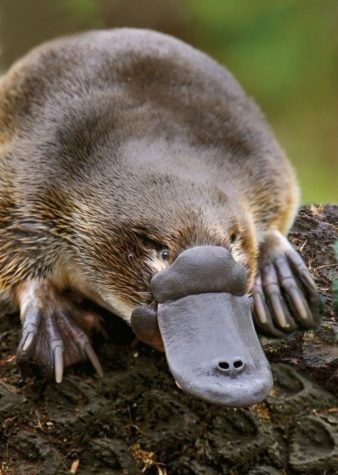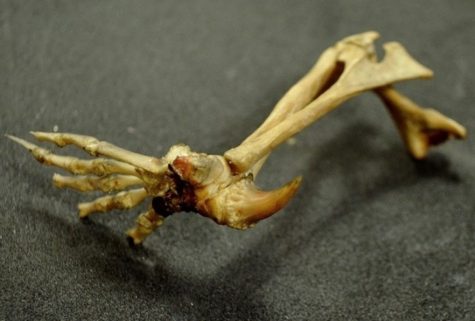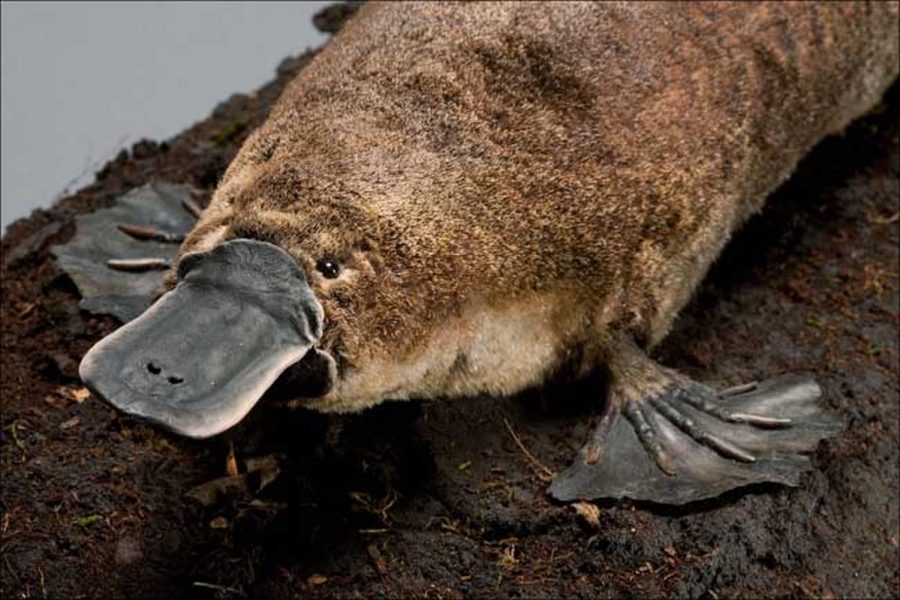Animal of the Week: The Platypus
November 8, 2017
By Sam Schwartz ’18, Sports Section Editor
The Platypus (Ornithorhynchus anatinus)
The “Animal of the Week” shows the amazing biodiversity of nature. These animals won’t be your typical wild Zebras, Sharks, and Bears-but some of the most endangered and magnificent and peculiar animals on the planet.
If you asked a child to make up a new animal, from any of the creatures on the planet, they may just come up with the platypus. It is a true oddball, there is simply no other way to say it. With a duckbill, a beaver-like tail, and otter-like  feet, the Platypus looks like a mammalian-avian hybrid. But wait, they get weirder. Platypuses also lay eggs, the only mammal ever discovered to do so. And to top it off, they are venomous. They have spurs on the back of their legs which males use to fight over females during mating season. Their venom, though not lethal to humans, causes similar pain as the Box Jellyfish, the world’s most venomous animal. But before we dive deeper into the platypus world, here are some important facts.
feet, the Platypus looks like a mammalian-avian hybrid. But wait, they get weirder. Platypuses also lay eggs, the only mammal ever discovered to do so. And to top it off, they are venomous. They have spurs on the back of their legs which males use to fight over females during mating season. Their venom, though not lethal to humans, causes similar pain as the Box Jellyfish, the world’s most venomous animal. But before we dive deeper into the platypus world, here are some important facts.
The Platypus was first identified in the late seventeen hundreds by British exploring Eastern Australia. The explorers, dumbfounded by the appearance of the Platypus, sent back pelts and sketches of the creature to British scientists. The creature’s appearance befuddled the scientists so much that they believed the explorers had tricked them by sewing a duckbill to a beaver like creature. But after visiting Australia themselves, the scientists confirmed the Platypus’s existence.
Platypus’s aren’t similar to their caricature, Perry, in Phineas and Ferb. Platypus’s are not blue, but a wood brown color, nor are they as large as Perry. Their size is most similar to otters, reaching a maximum length of twenty inches and a weighing five pounds. But in fairness to the producers of Phineas and Ferb, they did correctly portray one characteristic of the Platypus, they do produce a low growl when agitated.
Even the way that Platypus’s hunt is unique. Platypus’s use electroreception, changes in electric fields caused by muscle  contractions, to detect their prey. This adaptation has most likely evolved due to Platypus’s semi-aquatic nature, as a majority of the time their prey is hidden out of sight under layers of mud. According to National Geographic Platypuses primarily feed on, “insects and larvae, shellfish, and worms” that hide in the muddy bottoms of Australian lakes and rivers.
contractions, to detect their prey. This adaptation has most likely evolved due to Platypus’s semi-aquatic nature, as a majority of the time their prey is hidden out of sight under layers of mud. According to National Geographic Platypuses primarily feed on, “insects and larvae, shellfish, and worms” that hide in the muddy bottoms of Australian lakes and rivers.
Luckily, this magnificent creature, unlike so many of the other creatures I have profiled, is not endangered; though it was nearly wiped out in the late nineteenth century for its fur. Luckily, due to Australians embracing this quirky animal, like making it an Australian mascot as well as putting a Platypus on the back of the Australian twenty cent coin, it has become an icon and protected animal of Australia. it Today, the Platypus is recognized as a “near threatened” species, two categories away from the “endangered status”. Don’t look for this oddity to be going away any time soon.




